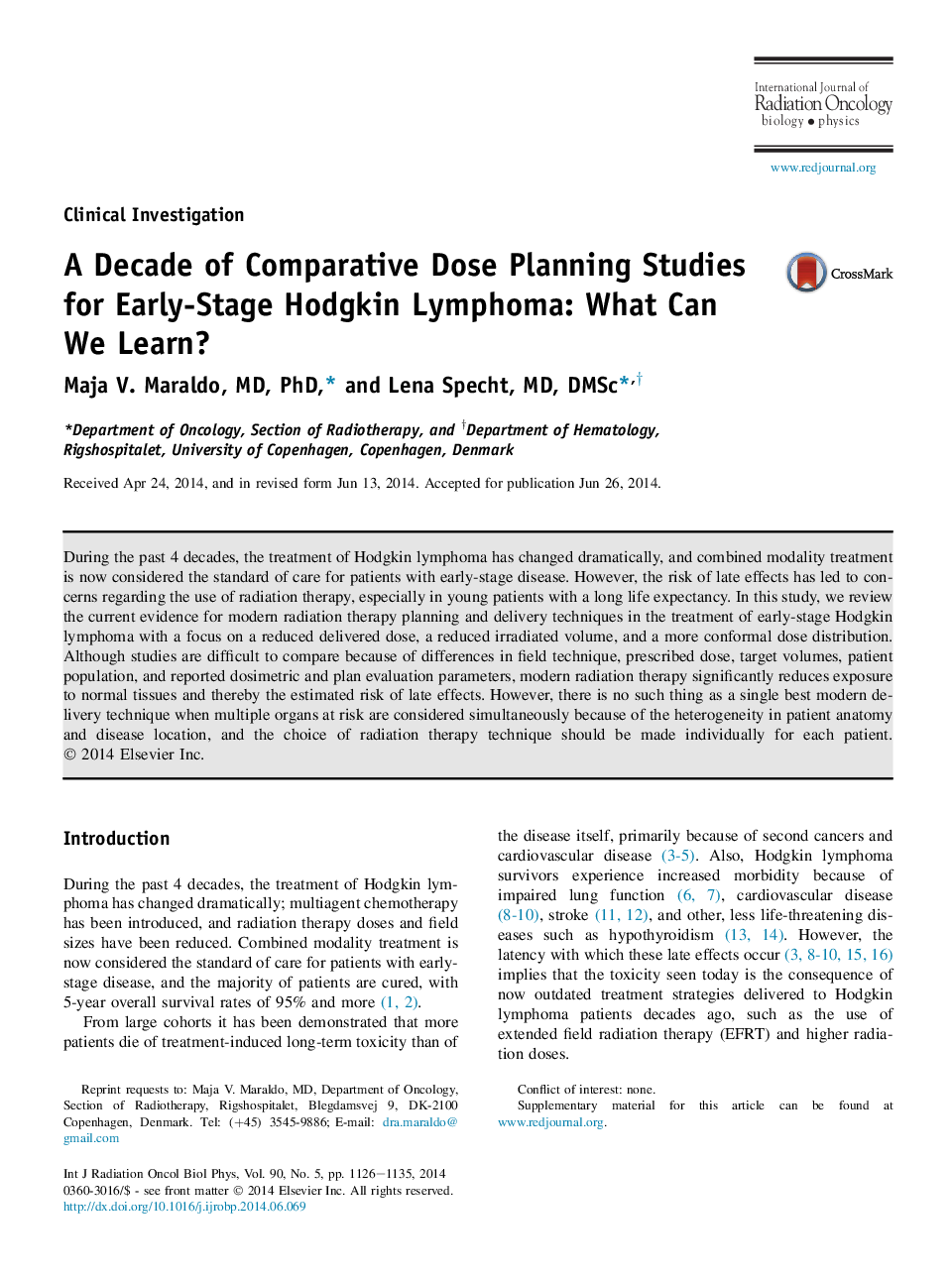| Article ID | Journal | Published Year | Pages | File Type |
|---|---|---|---|---|
| 8217996 | International Journal of Radiation Oncology*Biology*Physics | 2014 | 10 Pages |
Abstract
During the past 4Â decades, the treatment of Hodgkin lymphoma has changed dramatically, and combined modality treatment is now considered the standard of care for patients with early-stage disease. However, the risk of late effects has led to concerns regarding the use of radiation therapy, especially in young patients with a long life expectancy. In this study, we review the current evidence for modern radiation therapy planning and delivery techniques in the treatment of early-stage Hodgkin lymphoma with a focus on a reduced delivered dose, a reduced irradiated volume, and a more conformal dose distribution. Although studies are difficult to compare because of differences in field technique, prescribed dose, target volumes, patient population, and reported dosimetric and plan evaluation parameters, modern radiation therapy significantly reduces exposure to normal tissues and thereby the estimated risk of late effects. However, there is no such thing as a single best modern delivery technique when multiple organs at risk are considered simultaneously because of the heterogeneity in patient anatomy and disease location, and the choice of radiation therapy technique should be made individually for each patient.
Related Topics
Physical Sciences and Engineering
Physics and Astronomy
Radiation
Authors
Maja V. MD, PhD, Lena MD, DMSc,
